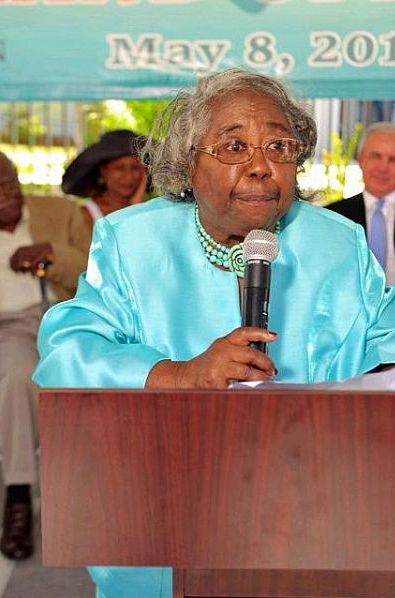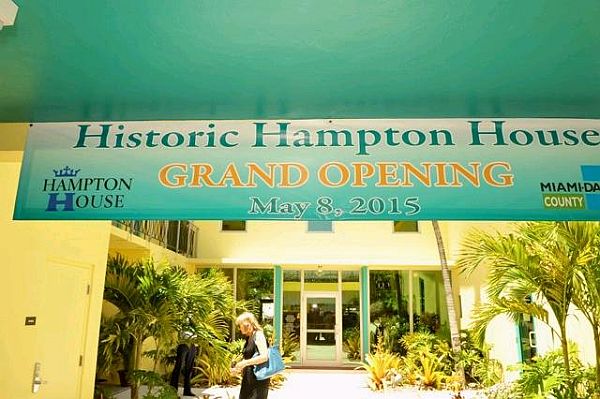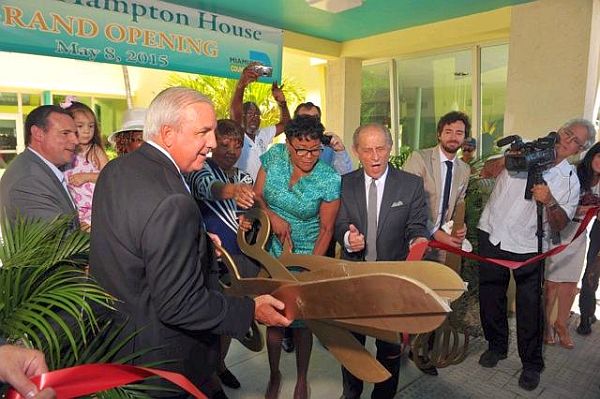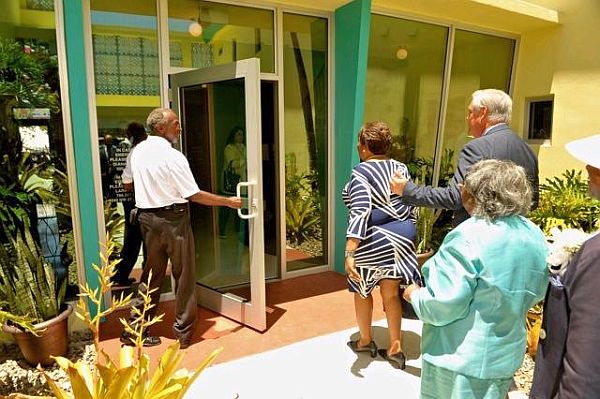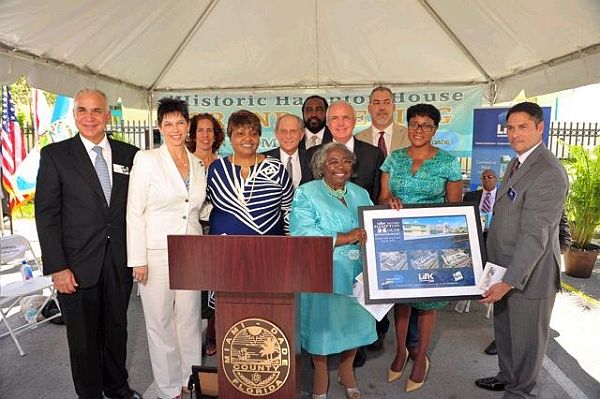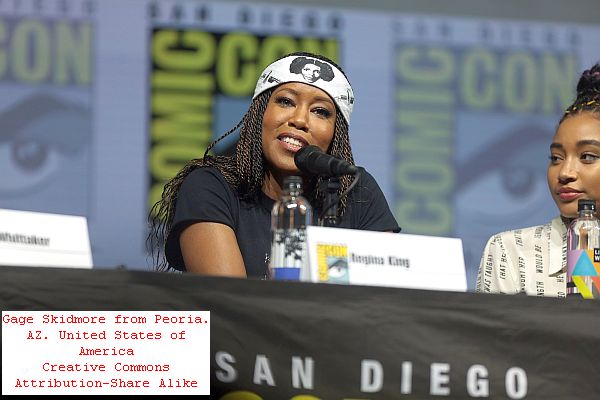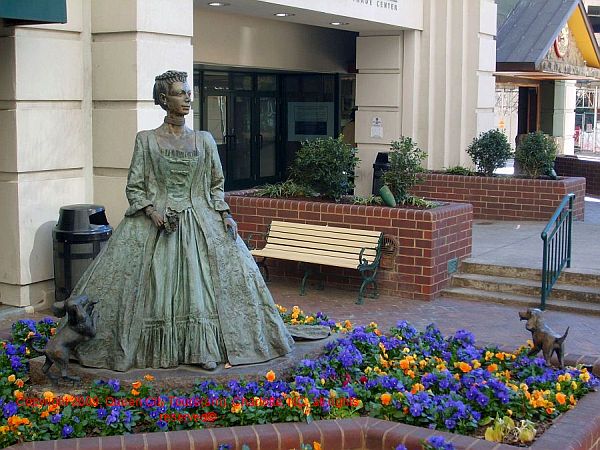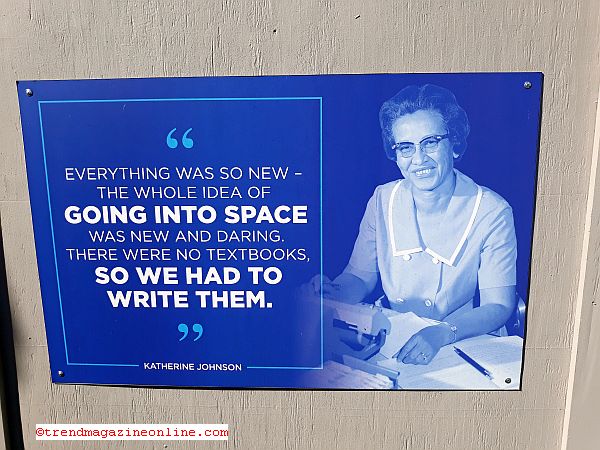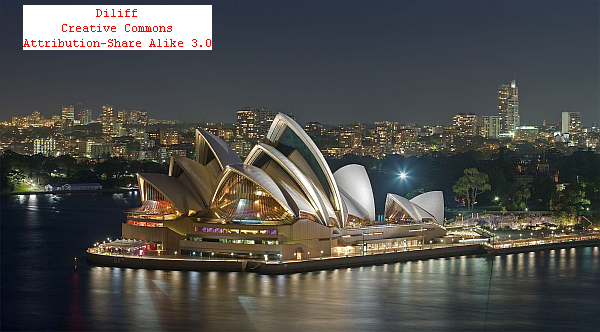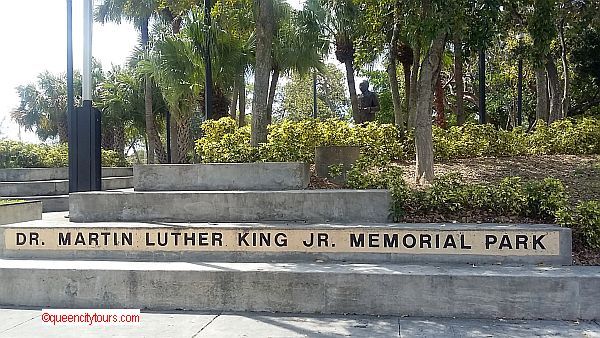
This interview was indeed especially pleasing because it involves the
rare saving of a now historic site with ties to the
African-American community of Miami,
Florida. In fact, I personally witnessed the final
stages of its refurbishment earlier in 2015. I was not,
at that time, familiar with the history of the Hampton House (formerly
Booker Terrace Motel) which ironically is located only about 2
½ miles from where I lived in my mid to late
teens and just before leaving Miami for the
Army in 1978. By that time, this early
1950′s building -- as I understand -- was well on
its way to the chopping block in the next 20 years or so. I am,
however, at a loss for any memory of this place although I had passed it
by on many trips going and coming from my home.
 Even more ironic is the fact
that I am related to one of the persons responsible for the
gentrification of this old building. I grew up knowing her as
Aunt Enid and her late brother (my Uncle)
Isreal is the first Black Pressman to
work at the old Miami Herald building off
Biscayne Boulevard in Downtown Miami.
His oldest son (Kenneth) was employed there since the late
1970’s/early 1980’s and is
responsible for the professional photographs appearing in this article.
Dr. Enid Curtis Pinkney has been a champion for historic
preservation since the better part of the 21st
Century and has been instrumental in saving the now historic
Lemon City Cemetery and the uncovered Native
American burial ground now known as the Miami Circle in
Downtown.
Even more ironic is the fact
that I am related to one of the persons responsible for the
gentrification of this old building. I grew up knowing her as
Aunt Enid and her late brother (my Uncle)
Isreal is the first Black Pressman to
work at the old Miami Herald building off
Biscayne Boulevard in Downtown Miami.
His oldest son (Kenneth) was employed there since the late
1970’s/early 1980’s and is
responsible for the professional photographs appearing in this article.
Dr. Enid Curtis Pinkney has been a champion for historic
preservation since the better part of the 21st
Century and has been instrumental in saving the now historic
Lemon City Cemetery and the uncovered Native
American burial ground now known as the Miami Circle in
Downtown.
Here is what Dr. Enid C. Pinkney had to say about the now historic Hampton House.
Jay -- What was it like for you growing up in Overtown [formerly Colored Town] Miami in the 1930’s through 1960’s during segregation?
Dr. Pinkney -- I was born October 15, 1931 at 1827 N. W. 5th Court in Overtown during the days of segregation and the depression. . My parents owned the house I was born in. Those were good days. I was active in our church, the Church of God of Prophecy where I participated in various activities in the Church. I participated in Christmas, Easter and various other programs in the Church. I had to learn my “piece.” I was usually given a poem or speech to memorize that I had to say on the Program. My mother worked arduously with me to commit to memory whatever I had to say because she did not want me to make a mistake and forget something. She was a stickler for perfection. I knew that if I messed-up she would be embarrassed and I wanted to make both of my parents proud of me.
It was the same thing in school. I participated in various activities including oratorical contests and dramatic activities. I ran for president of the Student Council at Booker T. Washington High School and won. This gave me the opportunity to meet celebrities who came to the school and take pictures with them. I still have a picture that I took with Joe Louis. I enjoyed my upbringing in Overtown because it was a Village. Your teachers and neighbors cared about you and were proud of your accomplishments and offered to help you where and whenever they could. We were a self sufficient community. Most of our needs were met within our community.
We ran into segregation when we ventured outside of our community like going downtown when we had to sit in the back of the bus or go to a colored water fountains, or could not try on clothes in Burdines and other stores. They would tell you to take them home to try them on. Some people use to wear the clothes and bring them back and tell them that they did not fit. We had dress makers like Mrs. Winifred Thompson, and tailors, and shoemakers and repairmen who could take care of our clothing needs. We did not let segregation affect us psychologically because we knew who we were and whose we were. We were taught to be the best we could be and to get a good education and become successful in life. We were also taught to give back to our community and that is what I am trying to do.
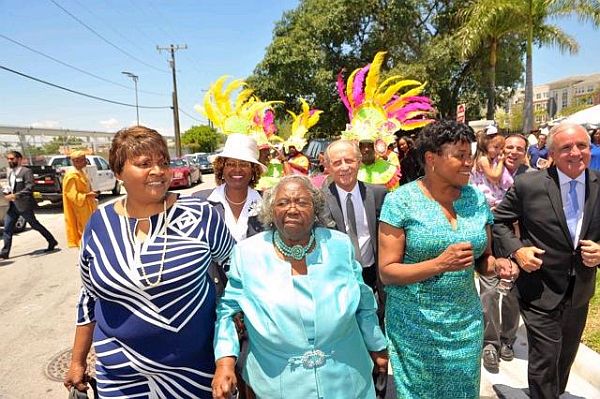 Jay -- Of all of your
educational accomplishments, which are you most proud of?
Jay -- Of all of your
educational accomplishments, which are you most proud of?
Dr. Pinkney -- I am most proud of being a graduate of Talladega College which is a small private liberal arts college in Talladega, Alabama. I went to Talladega in 1949 and graduated in 1953. The faculty was integrated and they had very high standards of education. I am very proud of what they did for me.
I am also proud of my Masters Degree in Guidance and Counseling from Barry University in Miami and my Honorary Doctorate Degree in Humane Letters from ST. Thomas University in Miami and another Doctorate Degree in Humane Letters from my Alma Mata, Talladega College. What I am proud of is how these institutions have prepared me to be of service to the community and share my education with others. As results of this I have received many honors and awards including the Peter Brink Award which is a national historic preservation award of the National Trust of Historic Preservation.
Jay -- Did you experience any racism while attending Talladega College in Alabama?
Dr. Pinkney -- I went to Talladega College during the days of segregation and the Ku Klux Klan use to parade around the college on Battle Street in September at the beginning of the school year. I never went to a movie the entire four years I was there because black people had to sit in the balcony and I was not use to that in Miami. The theatres in Miami were segregated completely, either all black or all white and we could sit anywhere we Wanted to. One Christmas when I was coming back to Miami we had to catch the train in Birmingham. The train was late but they would not let us wait in the train station. We had to wait outside in the cold and watch the white people in the train station enjoy the warmth of the heat. By the time I got on the train, I had no feelings in my Feet.
It felt like my blood had stopped circulating. They seated us in the first car. We reported to our white teachers how we had been segregated on the train and they told us to let them buy our tickets the next time we were going Home. They always put black people in the first car. The next time we went home we had tickets for car 5. The conductor looked at the ticket and discussed it with someone else as if to wonder how we got tickets for car 5. Not knowing whether we were a test case from the NAACP they let us sit in car 5 but we had to sit on the last seat in car 5 which did not recline.
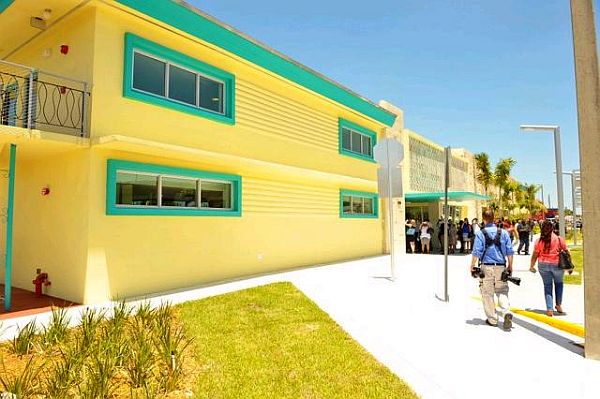 Jay -- What church did you
attend as a child?
Jay -- What church did you
attend as a child?
Dr. Pinkney -- The Church of God of Prophecy. My father was a minister and my mother was a missionary.
Jay -- Your father immigrated to Miami from the Bahamas in 1910; what part/island?
Dr. Pinkney -- My father came from Cat Island, Bahamas
Jay -- Your father was a diver in the Bahamas; do you swim?
Dr. Pinkney -- Very little. We did not have the opportunity to learn how to swim in Miami because of segregation. Black people were not allowed to go to the beach in Miami until 1945 when there was a wade-in at Haulover Beach and the City official decided to permit black people to go to Virginia Key Beach. I worked on the Virginia Key Beach Task Force to re-open Virginia Key Beach and am now serving as Vice-chair of the Virginia Key Beach Trust. I learned to swim at Talladega College as a part of physical education class.
 Even more ironic is the fact
that I am related to one of the persons responsible for the
gentrification of this old building. I grew up knowing her as
Aunt Enid and her late brother (my Uncle)
Isreal is the first Black Pressman to
work at the old Miami Herald building off
Biscayne Boulevard in Downtown Miami.
His oldest son (Kenneth) was employed there since the late
1970’s/early 1980’s and is
responsible for the professional photographs appearing in this article.
Dr. Enid Curtis Pinkney has been a champion for historic
preservation since the better part of the 21st
Century and has been instrumental in saving the now historic
Lemon City Cemetery and the uncovered Native
American burial ground now known as the Miami Circle in
Downtown.
Even more ironic is the fact
that I am related to one of the persons responsible for the
gentrification of this old building. I grew up knowing her as
Aunt Enid and her late brother (my Uncle)
Isreal is the first Black Pressman to
work at the old Miami Herald building off
Biscayne Boulevard in Downtown Miami.
His oldest son (Kenneth) was employed there since the late
1970’s/early 1980’s and is
responsible for the professional photographs appearing in this article.
Dr. Enid Curtis Pinkney has been a champion for historic
preservation since the better part of the 21st
Century and has been instrumental in saving the now historic
Lemon City Cemetery and the uncovered Native
American burial ground now known as the Miami Circle in
Downtown.Here is what Dr. Enid C. Pinkney had to say about the now historic Hampton House.
Jay -- What was it like for you growing up in Overtown [formerly Colored Town] Miami in the 1930’s through 1960’s during segregation?
Dr. Pinkney -- I was born October 15, 1931 at 1827 N. W. 5th Court in Overtown during the days of segregation and the depression. . My parents owned the house I was born in. Those were good days. I was active in our church, the Church of God of Prophecy where I participated in various activities in the Church. I participated in Christmas, Easter and various other programs in the Church. I had to learn my “piece.” I was usually given a poem or speech to memorize that I had to say on the Program. My mother worked arduously with me to commit to memory whatever I had to say because she did not want me to make a mistake and forget something. She was a stickler for perfection. I knew that if I messed-up she would be embarrassed and I wanted to make both of my parents proud of me.
It was the same thing in school. I participated in various activities including oratorical contests and dramatic activities. I ran for president of the Student Council at Booker T. Washington High School and won. This gave me the opportunity to meet celebrities who came to the school and take pictures with them. I still have a picture that I took with Joe Louis. I enjoyed my upbringing in Overtown because it was a Village. Your teachers and neighbors cared about you and were proud of your accomplishments and offered to help you where and whenever they could. We were a self sufficient community. Most of our needs were met within our community.
We ran into segregation when we ventured outside of our community like going downtown when we had to sit in the back of the bus or go to a colored water fountains, or could not try on clothes in Burdines and other stores. They would tell you to take them home to try them on. Some people use to wear the clothes and bring them back and tell them that they did not fit. We had dress makers like Mrs. Winifred Thompson, and tailors, and shoemakers and repairmen who could take care of our clothing needs. We did not let segregation affect us psychologically because we knew who we were and whose we were. We were taught to be the best we could be and to get a good education and become successful in life. We were also taught to give back to our community and that is what I am trying to do.
 Jay -- Of all of your
educational accomplishments, which are you most proud of?
Jay -- Of all of your
educational accomplishments, which are you most proud of?Dr. Pinkney -- I am most proud of being a graduate of Talladega College which is a small private liberal arts college in Talladega, Alabama. I went to Talladega in 1949 and graduated in 1953. The faculty was integrated and they had very high standards of education. I am very proud of what they did for me.
I am also proud of my Masters Degree in Guidance and Counseling from Barry University in Miami and my Honorary Doctorate Degree in Humane Letters from ST. Thomas University in Miami and another Doctorate Degree in Humane Letters from my Alma Mata, Talladega College. What I am proud of is how these institutions have prepared me to be of service to the community and share my education with others. As results of this I have received many honors and awards including the Peter Brink Award which is a national historic preservation award of the National Trust of Historic Preservation.
Jay -- Did you experience any racism while attending Talladega College in Alabama?
Dr. Pinkney -- I went to Talladega College during the days of segregation and the Ku Klux Klan use to parade around the college on Battle Street in September at the beginning of the school year. I never went to a movie the entire four years I was there because black people had to sit in the balcony and I was not use to that in Miami. The theatres in Miami were segregated completely, either all black or all white and we could sit anywhere we Wanted to. One Christmas when I was coming back to Miami we had to catch the train in Birmingham. The train was late but they would not let us wait in the train station. We had to wait outside in the cold and watch the white people in the train station enjoy the warmth of the heat. By the time I got on the train, I had no feelings in my Feet.
It felt like my blood had stopped circulating. They seated us in the first car. We reported to our white teachers how we had been segregated on the train and they told us to let them buy our tickets the next time we were going Home. They always put black people in the first car. The next time we went home we had tickets for car 5. The conductor looked at the ticket and discussed it with someone else as if to wonder how we got tickets for car 5. Not knowing whether we were a test case from the NAACP they let us sit in car 5 but we had to sit on the last seat in car 5 which did not recline.
 Jay -- What church did you
attend as a child?
Jay -- What church did you
attend as a child?Dr. Pinkney -- The Church of God of Prophecy. My father was a minister and my mother was a missionary.
Jay -- Your father immigrated to Miami from the Bahamas in 1910; what part/island?
Dr. Pinkney -- My father came from Cat Island, Bahamas
Jay -- Your father was a diver in the Bahamas; do you swim?
Dr. Pinkney -- Very little. We did not have the opportunity to learn how to swim in Miami because of segregation. Black people were not allowed to go to the beach in Miami until 1945 when there was a wade-in at Haulover Beach and the City official decided to permit black people to go to Virginia Key Beach. I worked on the Virginia Key Beach Task Force to re-open Virginia Key Beach and am now serving as Vice-chair of the Virginia Key Beach Trust. I learned to swim at Talladega College as a part of physical education class.

